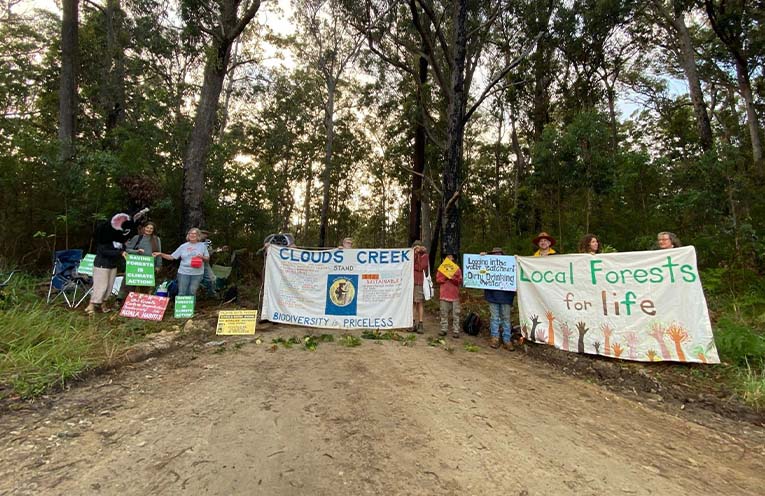
RESIDENTS neighbouring the Clouds Creek State Forest on the Dorrigo Plateau say it is a globally significant native forest, a critical part of the Coffs-Clarence Regional Water supply catchments, and a key part of the Great Koala National Park (GKNP).
The ‘Blicks River Guardians’ claim to have recently found a nationally significant population of endangered Greater Gliders in compartments of the state forest slated for logging; reporting 22 animals, two den trees and tens of other likely den hollows in large, old-growth trees.
 Advertise with News of The Area today.
Advertise with News of The Area today.It’s worth it for your business.
Message us.
Phone us – (02) 4981 8882.
Email us – media@newsofthearea.com.au
The group claims that surveys undertaken before roading or logging operations begin are not comprehensive enough.
“The rapidly declining Greater Glider is not only the largest gliding marsupial on earth, but also the cutest, so we were heartened to find them in significant numbers in old growth as well as in forest intact and recovering from the 2019 Bees Nest mega-fire,” group spokesperson Meredith Stanton said.
“Sadly however, these same forests are now approved for imminent logging.”
Forestry Corporation NSW (FCNSW) says it is now using thermal imaging to improve its identification of Greater Gliders in state forests.
General Manager Hardwood Forests, Daniel Tuan, said since the Environment Protection Authority (EPA) raised concerns in Tallaganda State Forest in August this year, Forestry Corporation had been working with the EPA to understand new survey requirements for glider dens and trialling new methods.
“In the past we used spotlight transect sample surveys to search for Greater Gliders themselves to understand the density of glider populations in forests,” Mr Tuan said.
“These were conducted in the hours after sunset along tracks and trails to ensure it was safe for the people walking in the bush after dark, and dens were seldom sighted.
“It was thought that thermal UAVs (Unmanned Aerial Vehicles) might offer a better alternative to finding dens so we have been trialling different technologies and methods in two forests.”
FCNSW has not yet confirmed that it used this technology at Clouds Creek.
A spokesperson for FCNSW said timber harvesting operations are carefully planned and tightly regulated and every tree harvested is regrown again for the future.
According to the spokesperson, many months are spent planning operations in line with the rules to protect and maintain wildlife habitat, forest flora, water quality and biodiversity across the landscape.
Forestry Corporation says it takes its responsibility to protect wildlife habitat seriously and is working with the EPA on making sure the right protections for the Greater Glider and other endangered species are in place.
By Andrew VIVIAN